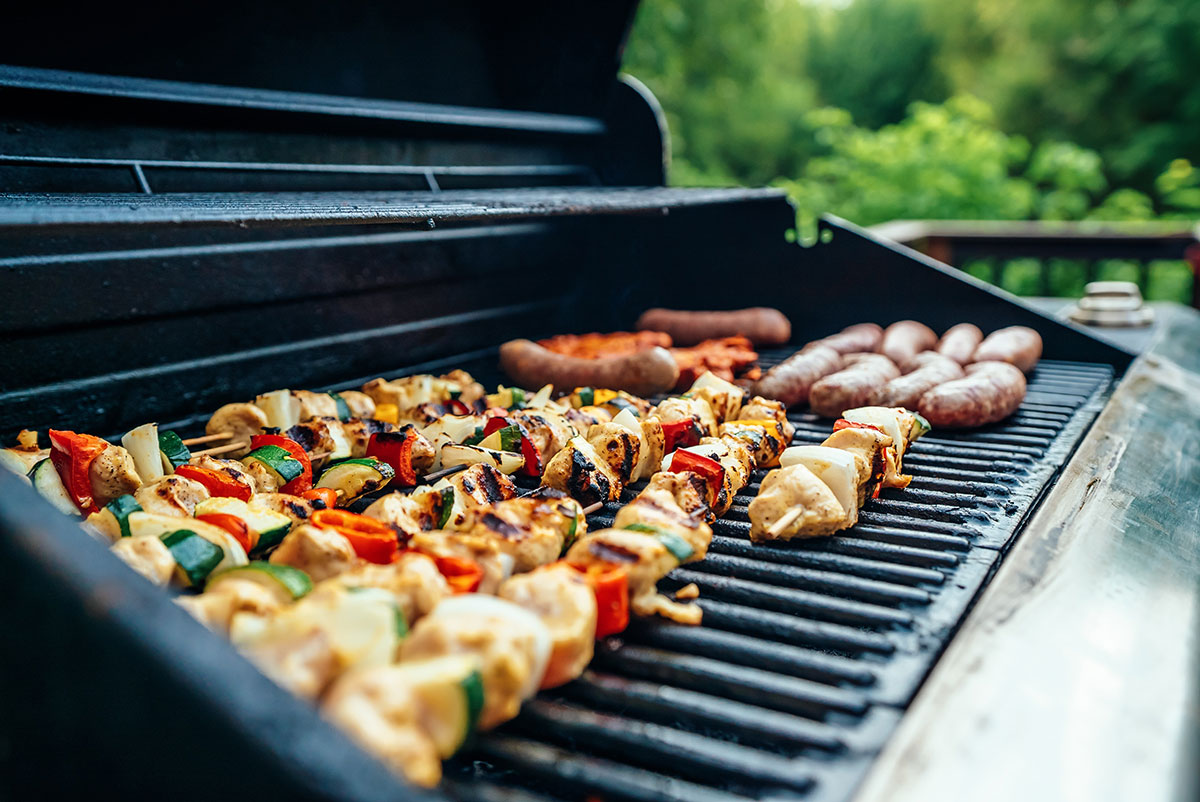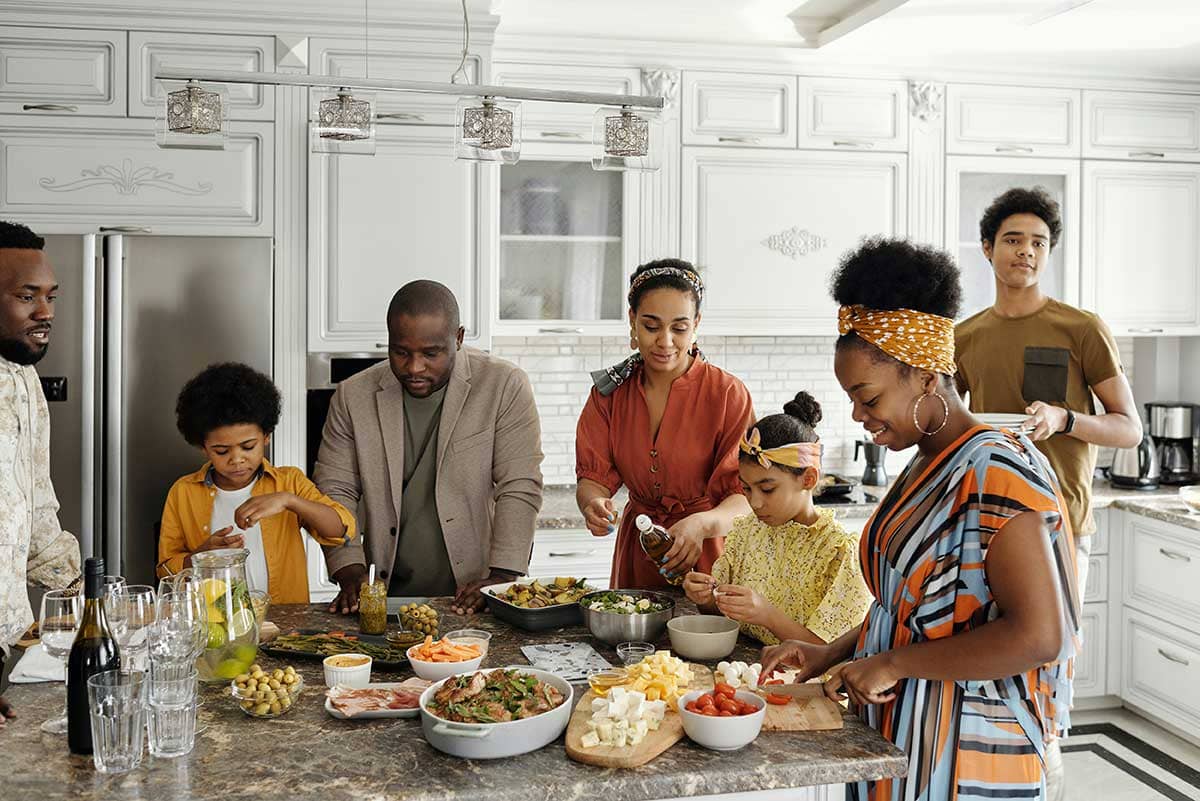The good days are coming, meaning barbecue season is open again! An enjoyable moment during the beautiful seasons, barbecues are appreciated by everyone, meat eaters or not. With family or friends, what could be better than a good barbecue to get together in complete relaxation and tranquillity? Despite this, organising a barbecue requires a little organisation in shopping, equipment, and preparation.
To make your life easier, discover all our tips and tricks for organising a successful and friendly barbecue.
Summary
1. Good organisation
Before you start cooking, you must plan your barbecue day or evening. The first step is to define the location (at your home, at a friend’s, etc.) and the date and time when your guests are coming. Also, check a few days in advance that the weather is suitable; a barbecue in the rain is not really desirable.
Then, make as many preparations as possible to enjoy the evening and your guests. Set up a small table with spices and utensils next to the grill, cut the vegetables on the grill, and arrange the meats in a dish to keep in the refrigerator. Set up the grill (firelighters, charcoal, grill, etc.). Finally, set the table and keep the drinks cool. To keep your guests waiting, remember to prepare a small, friendly and warm aperitif to keep your guests waitingRemember!
2. Preparing the barbecue
For more excellent safety, your barbecue must be installed on flat ground, far enough from the table to be stable. Also, check the direction of the wind so that your guests are not exposed to smoke and other aromas throughout the evening. For the embers to be ideal and to avoid toxic flames, the fire should (in general) be lit at least 30 minutes in advance. Make sure you have all the utensils ready and within reach.
3. The essential barbecue list
Grilling meat and skewers is just one step among many during a barbecue. The accompaniments are also necessary. Remember your guests who may have dietary restrictions or special diets: vegans, vegetarians, etc., who will tend more towards vegetables. So think about fruits, steamed or raw vegetables, salads, or fish! Here is a quick overview of the essential foods not to forget:
Meat
The main element of a barbecue is, of course, the meat. Vary the types of meat and cooking. Remember that some people prefer red meat (beef, pork, lamb, etc.) to white meat (chicken, turkey, etc.) and vice versa. Ask your butcher to help you determine the quantity. You can also complete your barbecue with fish (sea bass, sole, sea bream, etc.)!
In addition to traditional sausages and merguez, your guests can choose between hamburgers, chicken wings, sardines, shrimp, etc.
Vegetarian alternatives
Create your salads with the fruits, vegetables and condiments you prefer! Think about raw vegetable sticks like carrots, cucumbers or peppers. Vegetable skewers and grilled vegetables with tomatoes, peppers or eggplants are often very popular. A small buffet will make your meal more enjoyable and flexible for everyone.
Drinks and desserts
To finish your barbecue in style, also think about drinks and desserts—a fresh fruit salad, chocolate cake, lemon tart, brownie, macaroons, or any other sweet treat!
As for drinks, you’ve probably already thought about wine and beer. But don’t forget to bring fruit juices and sodas for people who don’t drink alcohol and those who must drive again.
4. Sauces and marinades
Don’t hesitate to marinate meats a few hours before cooking if you want them to be more tender and tasty. Some meats are already marinated when you buy them, but you can make your own.
If you want to add sauce (such as barbecue sauce, for example), only do so in the last five minutes of cooking. Use a brush to apply the sauce, then let it sit over low heat so it soaks into the meat.
5. Cooking
Food should be placed 15-20 cm from the heat on a clean grill. Red meats should be seared on extremely red embers and only salted once on the plate to prevent them from drying out. Vegetables, seafood and white meats are cooked for longer and at a lower temperature.
Three mistakes to avoid during your barbecue
Using too many flames: This can burn food and release toxins that are harmful to your health. Use a two-zone fire technique, i.e. a hot zone with lots of embers to sear the meat and a cooler zone with fewer coals for gentler cooking.
Slice the meat to check if it is cooked: This makes the meat dry and loses all its juices. For optimal cooking, invest in a good meat thermometer or get used to it by eye.
Dip the coals to extinguish the flames: Water only creates steam, which gives food an unpleasant flavour. Use a handful of coarse salt to extinguish the flames (or a little sugar to relight the coals).
To know how many people will attend your barbecue, use an online registration system!




